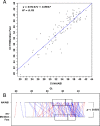Molecular detection of SARS-CoV-2 using a reagent-free approach
- PMID: 33284857
- PMCID: PMC7721139
- DOI: 10.1371/journal.pone.0243266
Molecular detection of SARS-CoV-2 using a reagent-free approach
Abstract
Shortage of reagents and consumables required for the extraction and molecular detection of SARS-CoV-2 RNA in respiratory samples has led many laboratories to investigate alternative approaches for sample preparation. Many groups recently presented results using heat processing method of respiratory samples prior to RT-qPCR as an economical method enabling an extremely fast streamlining of the processes at virtually no cost. Here, we present our results using this method and highlight some major pitfalls that diagnostics laboratories should be aware of before proceeding with this methodology. We first investigated various treatments using different temperatures, incubation times and sample volumes to optimise the heat treatment conditions. Although the initial data confirmed results published elsewhere, further investigations revealed unexpected inhibitory properties of some commonly used universal transport media (UTMs) on some commercially available RT-qPCR mixes, leading to a risk of reporting false-negative results. This emphasises the critical importance of a thorough validation process to determine the most suitable reagents to use depending on the sample types to be tested. In conclusion, a heat processing method is effective with very consistent Ct values and a sensitivity of 96.2% when compared to a conventional RNA extraction method. It is also critical to include an internal control to check each sample for potential inhibition.
Conflict of interest statement
The authors have declared that no competing interests exist.
Figures

Similar articles
-
Extraction-free SARS-CoV-2 detection by rapid RT-qPCR universal for all primary respiratory materials.J Clin Virol. 2020 Sep;130:104579. doi: 10.1016/j.jcv.2020.104579. Epub 2020 Aug 5. J Clin Virol. 2020. PMID: 32795959 Free PMC article.
-
Detection of SARS-CoV-2 RNA by direct RT-qPCR on nasopharyngeal specimens without extraction of viral RNA.PLoS One. 2020 Jul 24;15(7):e0236564. doi: 10.1371/journal.pone.0236564. eCollection 2020. PLoS One. 2020. PMID: 32706827 Free PMC article.
-
Phenol-chloroform-based RNA purification for detection of SARS-CoV-2 by RT-qPCR: Comparison with automated systems.PLoS One. 2021 Feb 24;16(2):e0247524. doi: 10.1371/journal.pone.0247524. eCollection 2021. PLoS One. 2021. PMID: 33626071 Free PMC article.
-
An international, interlaboratory ring trial confirms the feasibility of an extraction-less "direct" RT-qPCR method for reliable detection of SARS-CoV-2 RNA in clinical samples.PLoS One. 2022 Jan 13;17(1):e0261853. doi: 10.1371/journal.pone.0261853. eCollection 2022. PLoS One. 2022. PMID: 35025926 Free PMC article.
-
Potential False-Negative Nucleic Acid Testing Results for Severe Acute Respiratory Syndrome Coronavirus 2 from Thermal Inactivation of Samples with Low Viral Loads.Clin Chem. 2020 Jun 1;66(6):794-801. doi: 10.1093/clinchem/hvaa091. Clin Chem. 2020. PMID: 32246822 Free PMC article.
Cited by
-
Evaluation and Clinical Validation of Guanidine-Based Inactivation Transport Medium for Preservation of SARS-CoV-2.Adv Pharmacol Pharm Sci. 2022 Jul 21;2022:1677621. doi: 10.1155/2022/1677621. eCollection 2022. Adv Pharmacol Pharm Sci. 2022. PMID: 35873075 Free PMC article.
-
Testing for Severe Acute Respiratory Syndrome-Coronavirus 2: Challenges in Getting Good Specimens, Choosing the Right Test, and Interpreting the Results.Crit Care Med. 2020 Nov;48(11):1680-1689. doi: 10.1097/CCM.0000000000004594. Crit Care Med. 2020. PMID: 32826428 Free PMC article.
-
Saliva-based detection of COVID-19 infection in a real-world setting using reagent-free Raman spectroscopy and machine learning.J Biomed Opt. 2022 Feb;27(2):025002. doi: 10.1117/1.JBO.27.2.025002. J Biomed Opt. 2022. PMID: 35142113 Free PMC article.
-
Comparing lateral flow testing with a rapid RT-PCR method for SARS-CoV-2 detection in the United Kingdom-A retrospective diagnostic accuracy study.Health Sci Rep. 2022 Sep 14;5(5):e811. doi: 10.1002/hsr2.811. eCollection 2022 Sep. Health Sci Rep. 2022. PMID: 36177402 Free PMC article.
-
Multiplex Quantitative Polymerase Chain Reaction Diagnostic Test for SARS-CoV-2 and Influenza A/B Viruses.Methods Mol Biol. 2022;2511:53-65. doi: 10.1007/978-1-0716-2395-4_4. Methods Mol Biol. 2022. PMID: 35838951
References
-
- WHO. Coronavirus disease (COVID-19) outbreak [Internet]. www.who.int: WHO; 2020. https://www.who.int/emergencies/diseases/novel-coronavirus-2019.
MeSH terms
Substances
LinkOut - more resources
Full Text Sources
Other Literature Sources
Medical
Miscellaneous

